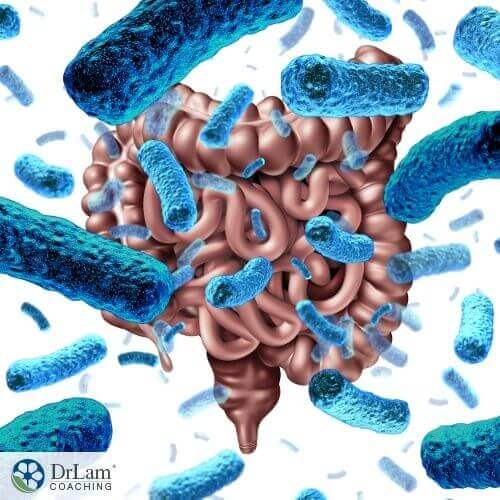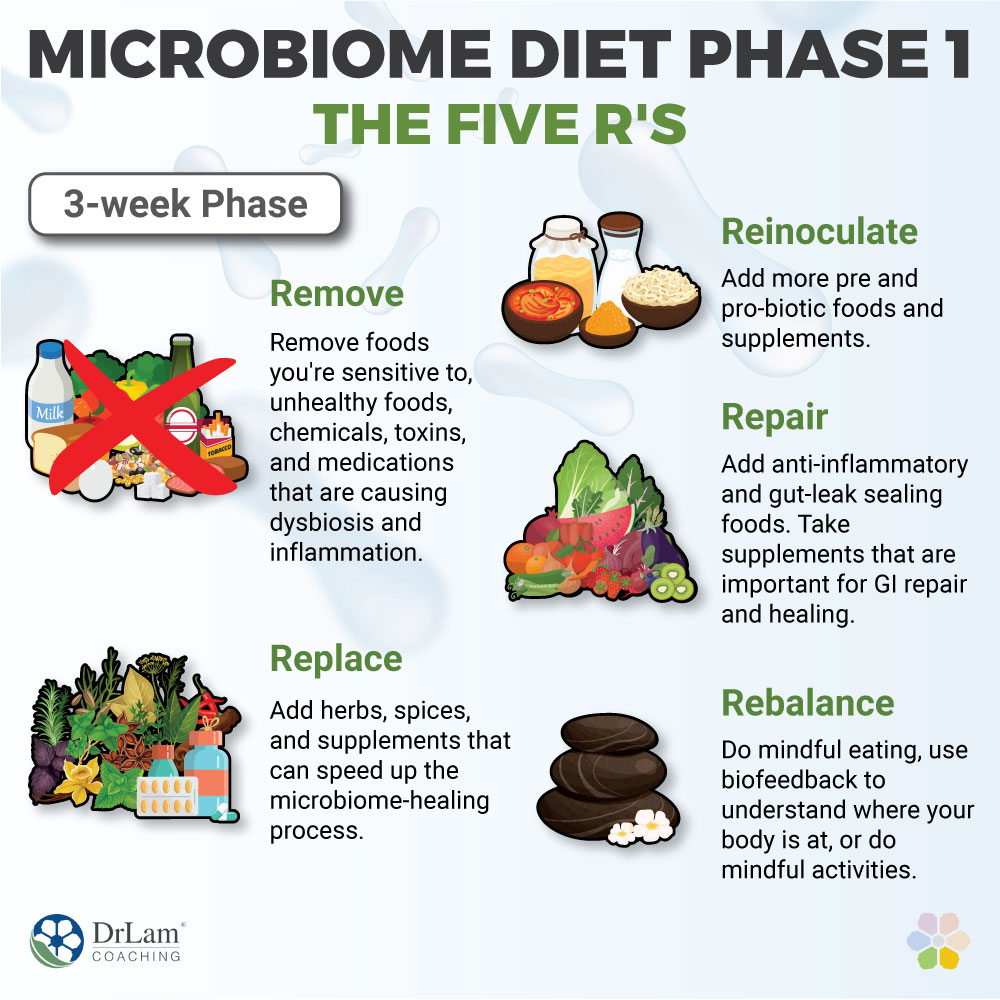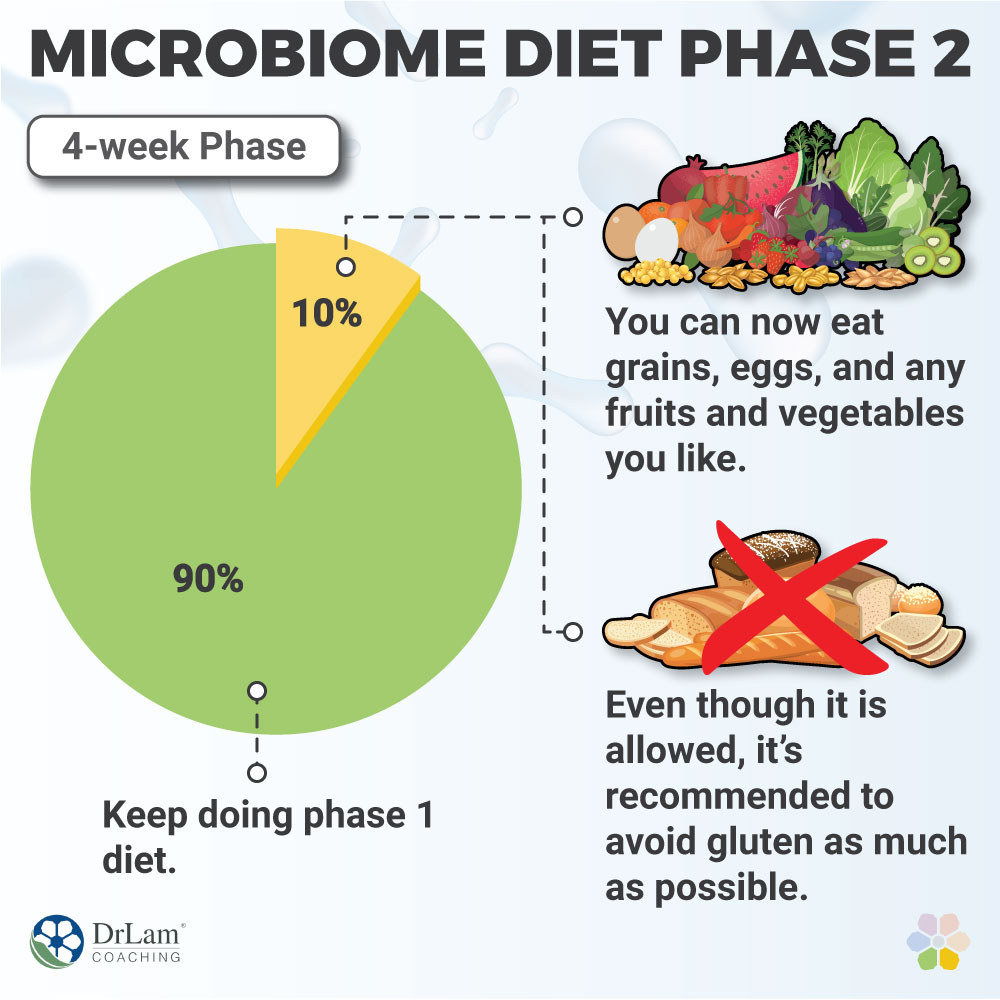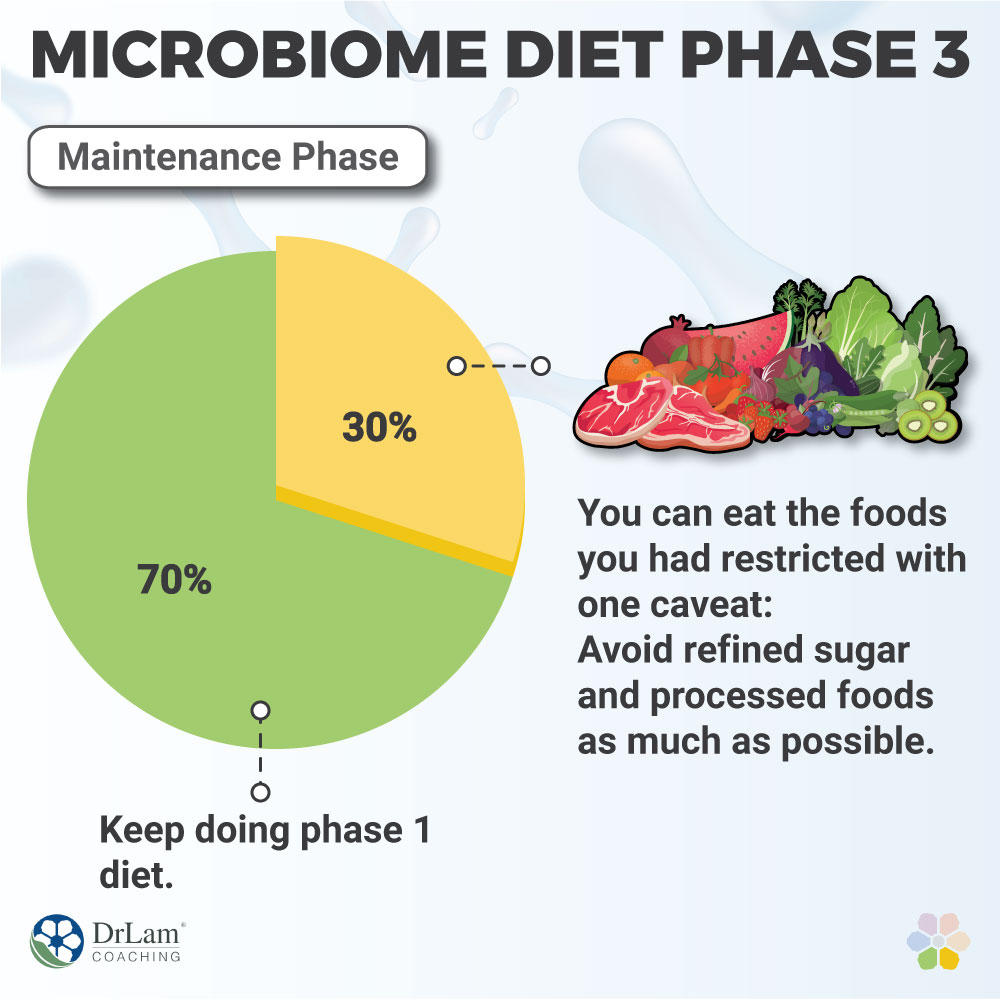The gut microbiome is finally getting center-stage, as it should, in many health and medical science circles. That’s why we want to cover the microbiome diet: A three-phase diet developed by Dr. Raphael Kellman, a board-certified physician who specializes in gut health.
Your gut microbiome is a combination of different microorganism strains, some beneficial and some not. And when the more harmful strains are overpowering the beneficial ones, you get dysbiosis. Dysbiosis can lead to many health problems, including leaky gut and chronic inflammation.
Your microbiome is a component of two of your NeuroEndoMetabolic (NEM) Stress Response circuits: the Neuroaffect and the Inflammation circuits. And just as a strong microbiome can help your NEM become a more efficient stress fighter, a weak or compromised one will not only weaken your NEM, it will also become a source of chronic stress itself.
That’s why one of the first things we look at when coaching our Adrenal Fatigue Syndrome (AFS) clients is their eating habits.
 AFS is a condition you can develop when your body is facing chronic stress. A bad diet, dysbiosis, or other gut issues are huge stressors, and, unfortunately, very common. Symptoms of AFS include fatigue, weight gain, sleep disturbances, brain fog, anxiety, mild depression, loss of libido, PMS, infertility, hypoglycemia, salt and sugar cravings, lowered immunity, food and drug sensitivities, and heart palpitations.
AFS is a condition you can develop when your body is facing chronic stress. A bad diet, dysbiosis, or other gut issues are huge stressors, and, unfortunately, very common. Symptoms of AFS include fatigue, weight gain, sleep disturbances, brain fog, anxiety, mild depression, loss of libido, PMS, infertility, hypoglycemia, salt and sugar cravings, lowered immunity, food and drug sensitivities, and heart palpitations.
The reason the symptoms can vary so much is because chronic stress affects all NEM components. For example, brain fog, anxiety, mild depression, and even sleep problems can happen because of the spread of chronic inflammation from the gut to the central nervous system, thanks to dysregulation of the Inflammation Circuit.
Your immune system, gut, and microbiome are the three components of your Inflammation Circuit. So when one, or all, of them is out of balance, your body’s inflammatory response can get out of control, which can then lead to chronic inflammation.
Thankfully, the microbiome diet can help rebalance all of these components, as well as improve adrenal function and the rest of your NEM.
Although the microbiome diet isn’t a one-size fits all, it can be adjusted to each person’s unique microbiome, lifestyle, and medical history. But whatever way it is adjusted, it will progress through the following three phases:

This phase lasts three weeks and consists of five R’s: remove, replace, reinoculate, repair, and rebalance.
Removing foods you're sensitive to, unhealthy foods, chemicals, toxins, and medications that are causing dysbiosis and inflammation. The following foods are ones to avoid at first but you can add them back in later:
The foods and substances that you’d be better off avoiding as much as possible, even after the diet is complete, include:
Add herbs, spices, and supplements that can speed up the microbiome-healing process. These can include:
This is the step where you really focus on repopulating your gut flora by adding more pre and pro-biotic foods and supplements. You can start experimenting with specific microbiome-supporting foods. Those would include fermented foods such as kimchi, sauerkraut, miso, kefir, and kombucha. For example, you can try making this sauerkraut recipe yourself at home.
Now it’s time to load up on healthy, organic foods. If you have AFS, we highly recommend the adrenal fatigue diet as the foundation that you then build up from. That’s because it’s already anti-inflammatory and it’s also mostly organic and very nutrient-dense. It’s specifically created to reduce the stress on your gut and adrenals, be easy to absorb, and to replenish your lost energy and nutrient stores.
You can also throw in some gut-leak sealing foods such as bone-broth. That can help with tightening the gut wall junctions that were compromised due to the dysbiosis. Once those leaks are sealed, you will have less inflammatory substances entering your bloodstream that trigger your immune response. Other supplements important for GI repair and healing include glutamine, arginine, vitamin A, Vitamin D, vitamin C, zinc, pantothenic acid, vitamin E, phosphatidylcholine, licorice, marshmallow, and aloe. Always consult your health care provider before starting these supplements.
Rebalance
It's important to do stress management, relaxation, and restore your processes in life in order to provide a good environment for your gut to heal. Rebalancing your lifestyle can consist of mindful eating, using biofeedback or heart rate variability monitoring to understand where your body is at, or doing mindful activities like yoga and psychotherapy to recenter yourself.

This is a four-week phase where you still keep doing your phase 1 diet but slowly start reintroducing some of the foods you had eliminated. But you only do so 10% of the time. You can now eat grains, eggs, and any fruits and vegetables you like. And although in the microbiome diet you are allowed to add gluten back in, we recommend you avoid it as much as possible if you’re following the adrenal fatigue diet.

This is the maintenance phase and you can stay in it until you’ve achieved your health goals. This is when you can eat the foods you had restricted for 30% of the time, while sticking to the microbiome diet 70% of the time. There's one caveat: avoid refined sugar and processed foods as much as possible.
 If you are one of millions of people with some level of dysbiosis, you could benefit greatly from trying the microbiome diet. It’s composed of three phases, each one building on the previous one, until your microbiome is strong and healthy again. You’ll then see many health benefits, including reduced inflammation, weight loss, more energy, better digestion, and maybe even total recovery from adrenal fatigue and NEM dysregulation.
If you are one of millions of people with some level of dysbiosis, you could benefit greatly from trying the microbiome diet. It’s composed of three phases, each one building on the previous one, until your microbiome is strong and healthy again. You’ll then see many health benefits, including reduced inflammation, weight loss, more energy, better digestion, and maybe even total recovery from adrenal fatigue and NEM dysregulation.
But because this diet can be quite challenging at first, and it also needs to be adjusted to your specific condition and needs, you should not attempt it by yourself. A gut health specialist should guide you each step of the way and make adjustments as you go along.
If you have questions about how to rebalance your gut microbiome or how to recover from adrenal fatigue, you can contact the Dr. Lam Coaching team. We can offer you a free** no-obligation phone consultation at +1 (626) 571-1234 where we will privately discuss your symptoms and what your options are. You can also send us a question through our Ask The Doctor system by clicking here.
The microbiome diet is a diet that was developed by Dr. Kellman, a board-certified physician and gut-health specialist. It’s composed of three phases that help you remove things that cause gut flora imbalance, add in gut-healthy foods and supplements, and even lose weight. See if it’s for you.